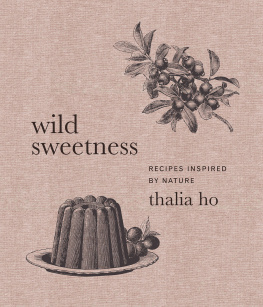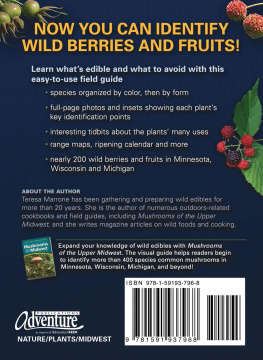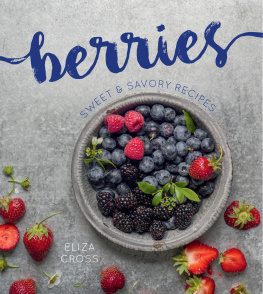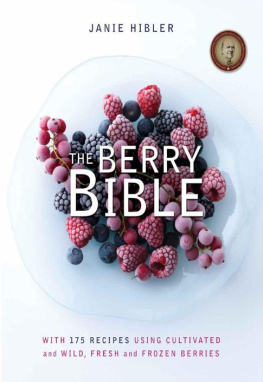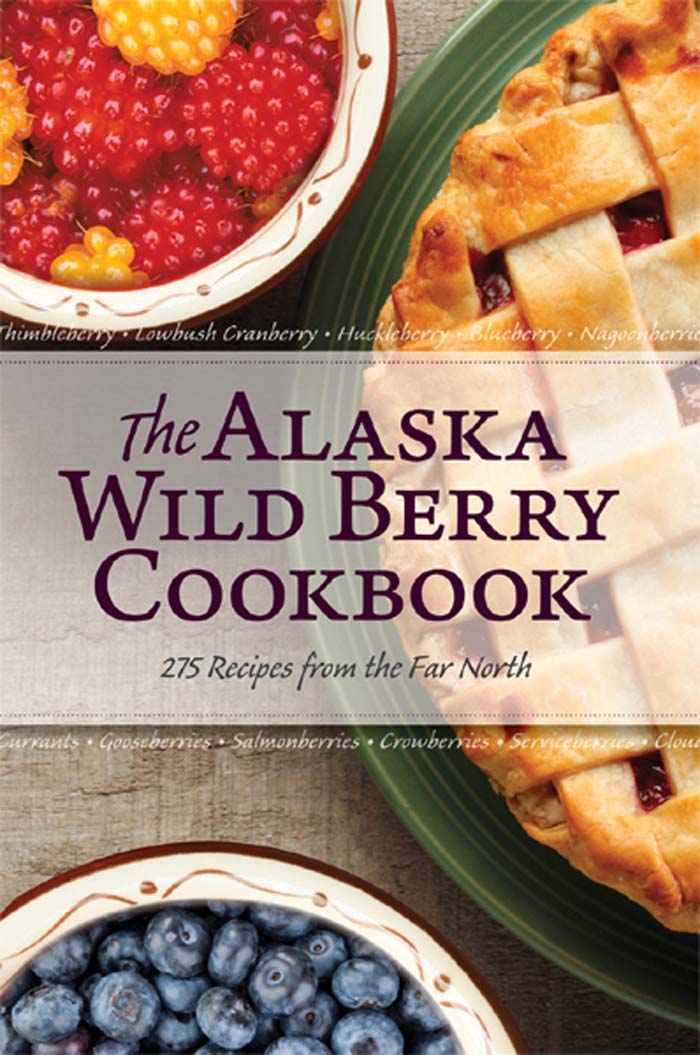The A LASKA
W ILD B ERRY
C OOKBOOK
275 Recipes from the Far North

The A LASKA
W ILD B ERRY
C OOKBOOK
275 Recipes from the Far North

Alaska Northwest Books
Copyright 2012 Alaska Northwest Books
Front cover and page 6: photo montage by Vicki Knapton; MBPHOTO, Inc./
iStockphoto, main pie photograph; Adam Smigielski/iStockphoto, blueberries;
Hugh Rose/DanitaDelimont.com, salmonberries.
All rights reserved. No part of this book may be reproduced or transmitted in any form or by any means, electronic or mechanical, including photocopying, recording, or by any information storage and retrieval system, without written permission of the publisher.
Originally published as Alaska Wildberry Guide & Cookbook
1982 Alaska Northwest Books
Library of Congress Control Number: 2011945083
Illustrations by Virginia Howie
Design by Vicki Knapton
Alaska Northwest Books
An imprint of Graphic Arts Books
P.O. Box 56118
Portland, OR 97238-6118
(503) 254-5591

Baneberry

Contents

Serviceberry
Foreword
Nature provides us with no more delicious, nourishing or prolific food than the berries that grow in the wild abandon throughout our Northern landscape. Wild berries have been an important part of the Native American diet and tradition for centuries. Many others have formed traditions of their own with yearly outings to pick berries of all kinds, both wild and cultivated, to use in jams, jellies, preserves and pies.
In recent years more and more people have become aware of the substantial health benefits of the wide varieties of berries that grow in the wild and are available from grocery stores. Strawberries, loganberries, currants, gooseberries, lingonberries, bilberries and more are healthful sources of vitamin C, calcium, magnesium, potassium, phytochemicals and flavonoids.
Wild berry pick is an enjoyable and time-honored tradition, especially in Alaska. Nearly 50 species of berries grow wild in Alaska. Most of these berries are edible, many a real treat to the taste buds. Some, however, are inedible or even poisonous. Whenever picking berries in the wild, it is a good idea to take along a reliable identification guide so that you know exactly what you are picking. Alaskas Wild Plants: A Guide to Alaskas Edible Harvest is an excellent source of information, not just on wild berries, but on many other edible plants growing the Alaska landscape. When picking wild berries, or any wild plant, for consumption avoid any that seem questionable.
Berry picking is a wonderful family projectand so is eating the proceeds. For the less adventurous, more and more wild berries and cultivated berries are available at grocery stores, farmers markets, food co-ops, and u-pickem farms. This book presents a choice selection of 275 recipes that range far and beyond the usual sampling of pies, toppings and jams. Besides desserts, youll find, among other categories, recipes for beverages, marinades and meat dishes, stuffings, candies, sauces, trail foods and even wines. Also included is invaluable information on a multitude of ways to preserve berries. And if berry picking isnt your things, or if you live in an area where the more unusual varieties are not available, cultivated varieties can be substituted for most of the wild berries in the recipes.
The Editors
A Little about Berries as Food
In this volume we have concentrated our recipes among the more abundant or more popular species of wild berries. Many berries native to other regions are similar to ours and can be used in place of the Northern fruit suggested for recipes here. Cultivated species may also be substituted for wild berries, although one must remember that they are often less tart than their wild relatives and adjustments in the sugar added may be necessary.
The different forms of raspberries may be substituted one for the other and blueberries likewise. The red currant is a distinctive fruit, and it is probably best not to use other varieties of currants when a recipe calls for red ones. Lowbush and highbush cranberries are entirely different and require different recipes.
The farther north one can collect rose hips (fruit of the rose), the more Vitamin C content they will have. They are extremely useful in the North where Vitamin C is so lacking and oranges so expensive! They can be used alone or with other fruit. Rose hips should definitely be harvested whenever available. There is difference of opinion about when to harvest. Some people say they should be picked just before the first frost and others prefer to pluck them after the frost.
Wild crab apples are not berries but they are included in this book because they are our only Northern tree fruit. They are often little more than shrubs but are well worth gathering when found in enough abundance.
Many of the recipes given here are in the dessert category, but you may be surprised by how many other ways there are to use wild berries. Lowbush cranberries are particularly good in certain meat dishes and are useful as a marinade for meat. Wild berries are fine for jam and jelly making, of course, not to mention for drying and freezing.
Food preparation often involves a certain amount of experimentation, so do try new combinations and methods and be an experimenter yourself. You may have some delightful eating if you are brave enough to venture changes in recipes. At any rate, wild berries are fun to work with from the time of harvest through the eating. We think you will agree.

Breads

BISCUITS AND BUNS
Blueberry Pan Biscuits
1 cup blueberries (huckleberries are good, too)
2 cups flour
2 teaspoons baking powder
1 teaspoon salt
2 tablespoons vegetable oil
2/3 cup milk
Grease and preheat on top of stove a large cast-iron skillet (dont let it get smoking hot). Mix berries and dry ingredients together in bowl. Add oil and mix together and stir until dough is soft. Do not beat. Drop by spoonfuls onto the heated skillet. Cover with lid and place on low heat, cooking dough about 10 minutes on each side. Serve hot with butter and honey.
Variation: Try Berry Drop Biscuits, using the same ingredients (or a biscuit mix). Add 3 tablespoons brown sugar. Drop from a spoon onto a cook sheet or large cast-iron skillet and bake from 15 to 20 minutes in a 400 oven.



